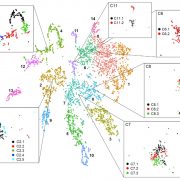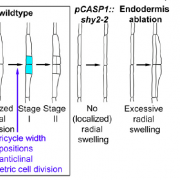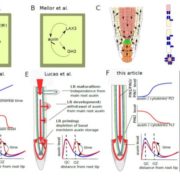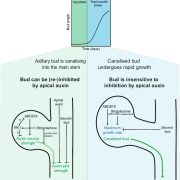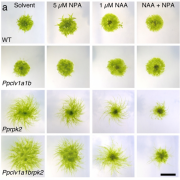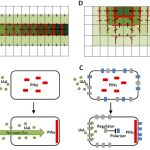Regulation of hair cell and stomatal size by a hair-cell specific peroxidase in Brachypodium distachyon
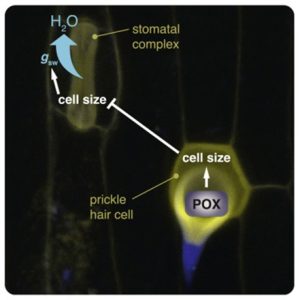 Mature grass leaves contain two specialized types of epidermal cells: stomata and epidermal hairs (trichomes). Stomatal pores are crucial for CO2 uptake and water conservation, while epidermal hairs contribute to water regulation and provide protection against UV-B light. If stomatal identity is not specified, hair cells can be formed instead in Brachypodium distachyon, while in maize, failure to specify hair cell identity can lead to the formation of ectopic stomata. This suggests that stomatal and epidermal hair cells are closely related, but the mechanism that coordinates their size and growth remains unknown. Nunes et al. used RNA-seq, reporting lines, gas exchange phenotyping, cell-wall composition analysis, and microscopy to investigate the regulatory mechanism underlying the growth of stomata and epidermal hairs in Brachypodium distachyon. They identified BdPRX76/BdPOX, a class III peroxidase, which is involved in hair cell and stomata size. BdPOX is expressed in elongating prickle hair cells (PHCs). In bdpox mutants, the prickle cells were smaller, and stomatal were longer, and the mutants showed a decrease in lignin content in the base of PHCs, suggesting that BdPOX plays a key role in coordinating the size of hair cells which indirectly affects stomatal size. Furthermore, the lignin content in the base of PHCs is important for proper growth. These findings open opportunities for further exploration of the feedback regulation between stomata and epidermal cells in grasses.(Summary by Andrea Gómez-Felipe @andreagomezfe) Curr. Biol. 10.1016/j.cub.2023.03.089
Mature grass leaves contain two specialized types of epidermal cells: stomata and epidermal hairs (trichomes). Stomatal pores are crucial for CO2 uptake and water conservation, while epidermal hairs contribute to water regulation and provide protection against UV-B light. If stomatal identity is not specified, hair cells can be formed instead in Brachypodium distachyon, while in maize, failure to specify hair cell identity can lead to the formation of ectopic stomata. This suggests that stomatal and epidermal hair cells are closely related, but the mechanism that coordinates their size and growth remains unknown. Nunes et al. used RNA-seq, reporting lines, gas exchange phenotyping, cell-wall composition analysis, and microscopy to investigate the regulatory mechanism underlying the growth of stomata and epidermal hairs in Brachypodium distachyon. They identified BdPRX76/BdPOX, a class III peroxidase, which is involved in hair cell and stomata size. BdPOX is expressed in elongating prickle hair cells (PHCs). In bdpox mutants, the prickle cells were smaller, and stomatal were longer, and the mutants showed a decrease in lignin content in the base of PHCs, suggesting that BdPOX plays a key role in coordinating the size of hair cells which indirectly affects stomatal size. Furthermore, the lignin content in the base of PHCs is important for proper growth. These findings open opportunities for further exploration of the feedback regulation between stomata and epidermal cells in grasses.(Summary by Andrea Gómez-Felipe @andreagomezfe) Curr. Biol. 10.1016/j.cub.2023.03.089


